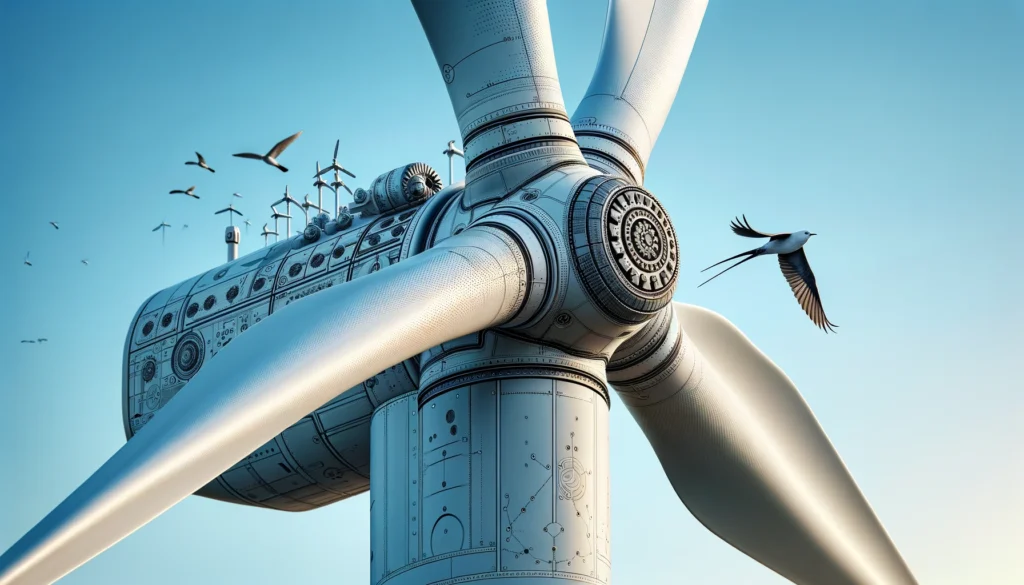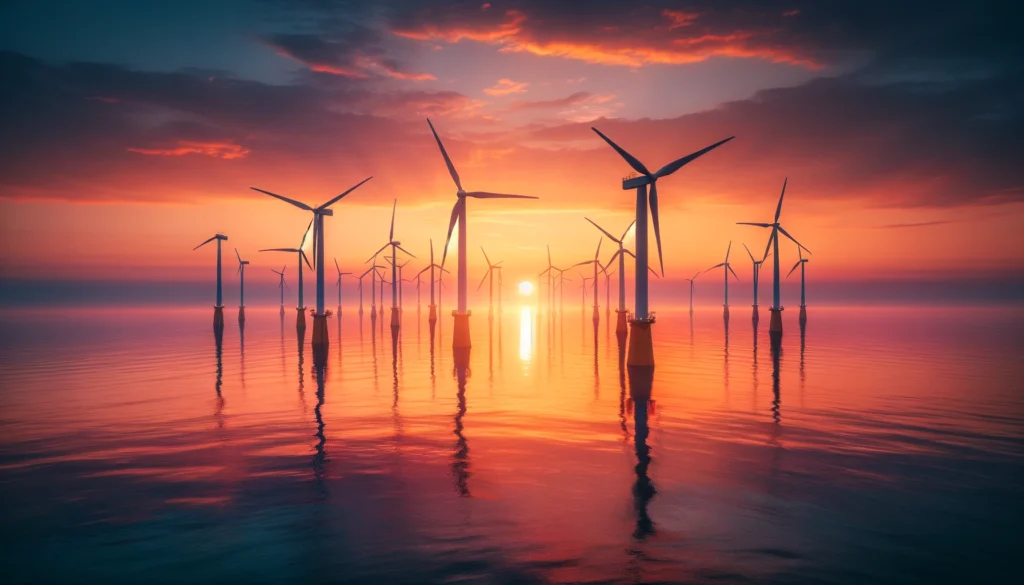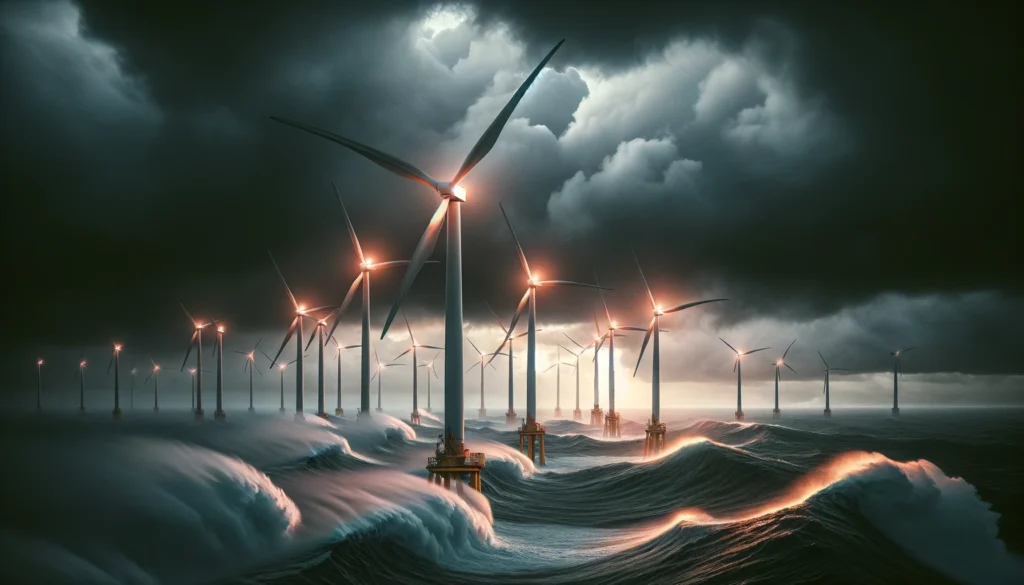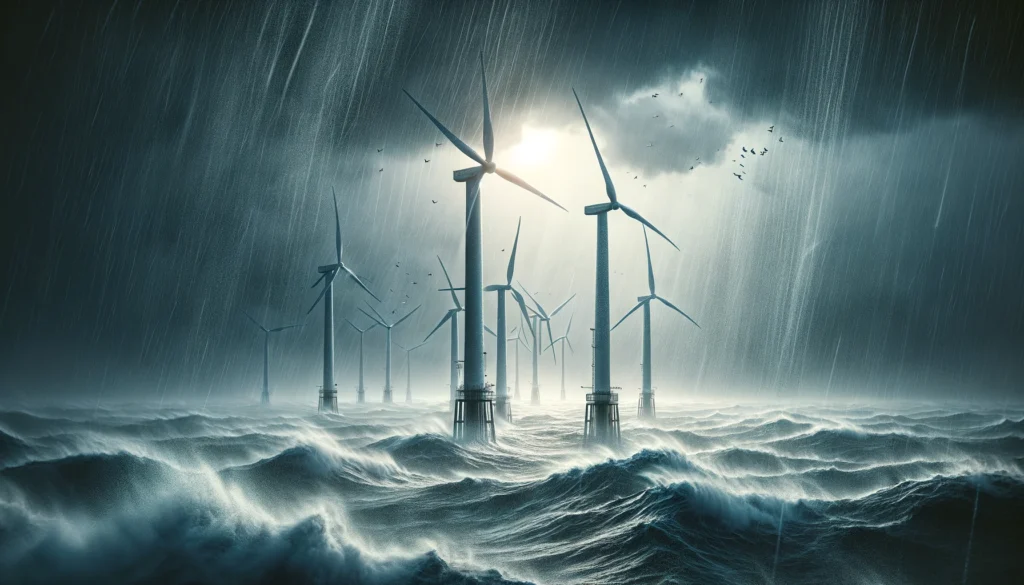Climate change has become one of the most pressing issues of our time, demanding urgent and comprehensive action. In this battle against climate change, renewable energy sources are emerging as a crucial tool for mitigation efforts. Among these, offshore wind energy holds significant promise due to its immense potential to generate clean electricity while reducing greenhouse gas emissions. This article explores the intersection of offshore wind energy and climate change mitigation, highlighting the role it plays in combating global warming.
Table Of Content
We invite you to read: “Wind Turbines vs. Climate Change: A Powerful Ally in the Fight for Our Planet”

Understanding Offshore Wind Energy
Offshore wind energy involves harnessing the power of wind turbines located in bodies of water, typically oceans or large lakes. These turbines are strategically placed in areas with strong and consistent wind patterns, allowing them to generate electricity efficiently. Compared to onshore wind farms, offshore wind farms tend to produce higher energy yields due to stronger and more consistent winds at sea.
Key Benefits in Mitigating Climate Change
Reducing Greenhouse Gas Emissions
Offshore wind energy is a clean and renewable energy source that produces electricity without emitting greenhouse gases. By replacing fossil fuel-based power generation with offshore wind power, countries can significantly reduce their carbon footprint and mitigate climate change.
Enhancing Energy Security
Investing in offshore wind reduces dependence on finite fossil fuel resources, thus enhancing energy security. This diversification of energy sources makes countries less vulnerable to supply disruptions and price fluctuations associated with traditional fossil fuels.
Stimulating Economic Growth
The development of offshore wind projects creates jobs and stimulates economic growth in regions with suitable offshore wind resources. This includes manufacturing, construction, maintenance, and various support services associated with the offshore wind industry.
Promoting Technological Innovation
The rapid growth of the offshore wind sector has spurred innovation in wind turbine technology, installation methods, and grid integration. These advancements contribute to the overall efficiency and cost-effectiveness of offshore wind energy, making it an increasingly attractive option for addressing climate change.
We invite you to read: “Wind Turbines and Climate Change: Mitigating CO2 Emissions with Wind Power”

Challenges and Solutions
While offshore wind energy offers significant benefits in mitigating climate change, several challenges must be addressed to maximize its potential:
High Initial Costs
The upfront capital investment required for offshore wind projects can be substantial, limiting widespread adoption. However, advancements in technology and economies of scale are gradually reducing costs, making offshore wind increasingly competitive with traditional energy sources.
Environmental Impact
Offshore wind farms can have environmental impacts on marine ecosystems, including habitat disturbance and potential harm to marine wildlife. Proper siting, environmental impact assessments, and mitigation measures are essential to minimize these effects and ensure sustainable development.
Grid Integration
Integrating offshore wind energy into existing power grids presents technical challenges, including intermittency and transmission constraints. Innovative grid infrastructure and energy storage solutions are needed to optimize the integration of offshore wind power and enhance grid stability.
Policy and Regulatory Frameworks
Clear and supportive policy frameworks are crucial for fostering investment in offshore wind energy. Governments play a vital role in providing incentives, setting renewable energy targets, and streamlining permitting processes to accelerate the deployment of offshore wind projects.
Future Outlook
The future of offshore wind energy looks promising, with continued growth expected in the coming decades. Technological advancements, declining costs, and supportive policies are driving expansion in offshore wind capacity worldwide. As countries strive to meet their climate goals and transition towards a low-carbon future, offshore wind will play an increasingly vital role in the global energy mix.
We invite you to read: “How Wind Energy Can Help Mitigate Climate Change”

Conclusion
Offshore wind energy represents a powerful tool in the fight against climate change, offering a clean, renewable alternative to fossil fuels. By harnessing the abundant wind resources available at sea, offshore wind projects can significantly reduce greenhouse gas emissions, enhance energy security, and stimulate economic growth. While challenges remain, continued investment, innovation, and collaboration are essential to fully realize the potential of offshore wind energy in mitigating climate change and building a sustainable energy future.
FAQs
How does offshore wind energy help mitigate climate change?
Offshore wind energy is a clean and renewable energy source that reduces greenhouse gas emissions by displacing fossil fuel-based electricity generation.
What are the benefits of offshore wind energy?
Benefits include reduced carbon footprint, enhanced energy security, job creation, economic growth, and technological innovation.
What challenges does offshore wind energy face?
Challenges include high initial costs, environmental impacts, grid integration issues, and the need for supportive policy frameworks.
You May Also Like
- The Role of Offshore Wind Farms in Climate Action
- Economic Winds of Change: How Wind Turbines and Solar Panels Affect Local Economies
- Sailing Towards Sustainability: The Rise of Offshore Wind Farms
- Wind Power and Forest Restoration: A Match Made for Sustainable Energy
- The Aerodynamics of Efficiency: Innovations in Wind Turbine Design

